
As the 70th anniversary of the sisters’ arrival in Wisconsin is celebrated this year, it is important to share the history and culture of the Benedictine Women of Madison. What brought the sisters to this area? What influences shaped the mission, vision and values? Who played key roles in what eventually became Holy Wisdom Monastery?
Highlights* of the growth, change and stability of the Benedictine Women of Madison will be reviewed in the next seven weeks culminating with the 70th Anniversary Celebration on July 9, 2023.
*These highlights only reflect the history of the sisters after their move to Madison in 1953.
In this issue, the focus is on the beginning – the 1960s.

1960
- An additional 90 acres of land was purchased from neighboring farmer Henry Brausen. This brought the total number of acres owned by the sisters to 133 acres.
- After the school opened in 1959, the focus turned to the construction of the motherhouse which was built on a hill overlooking Lake Mendota and the city of Madison. The motherhouse, as well as the school, was designed by local architect, Lewis Siberz. The new building included additional classrooms.
- Groundbreaking ceremonies for the motherhouse/novitiate were held on August 15th with Mother Monica Black turning over the first shovelful of dirt. Bishop O’Connor was also present as were Monsignors Edward Auchter, pastor of St. Mary of the Lake Church in Westport and Ferdinand Mack, pastor of St. Bernard’s Church in Middleton; Reverends Justin Sion, OSB, of St. Benedict’s Abbey, Atchison, Kansas, and chaplain for the Community and the Academy; Joseph Brechtl, pastor of St. Andrew’s Church in Verona; and Wilfred Tunink, OSB, of St. Louis.
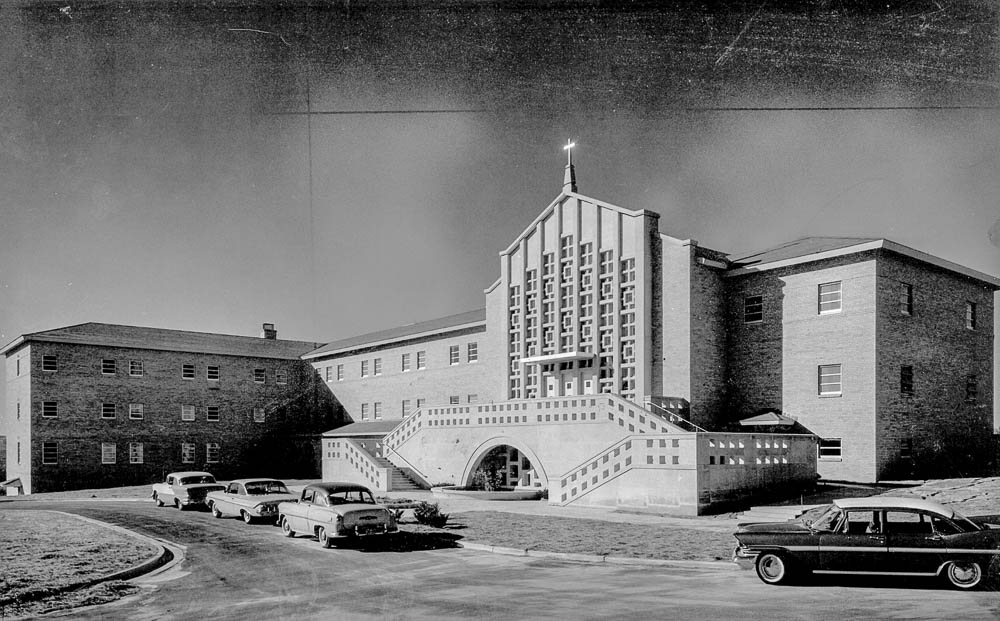
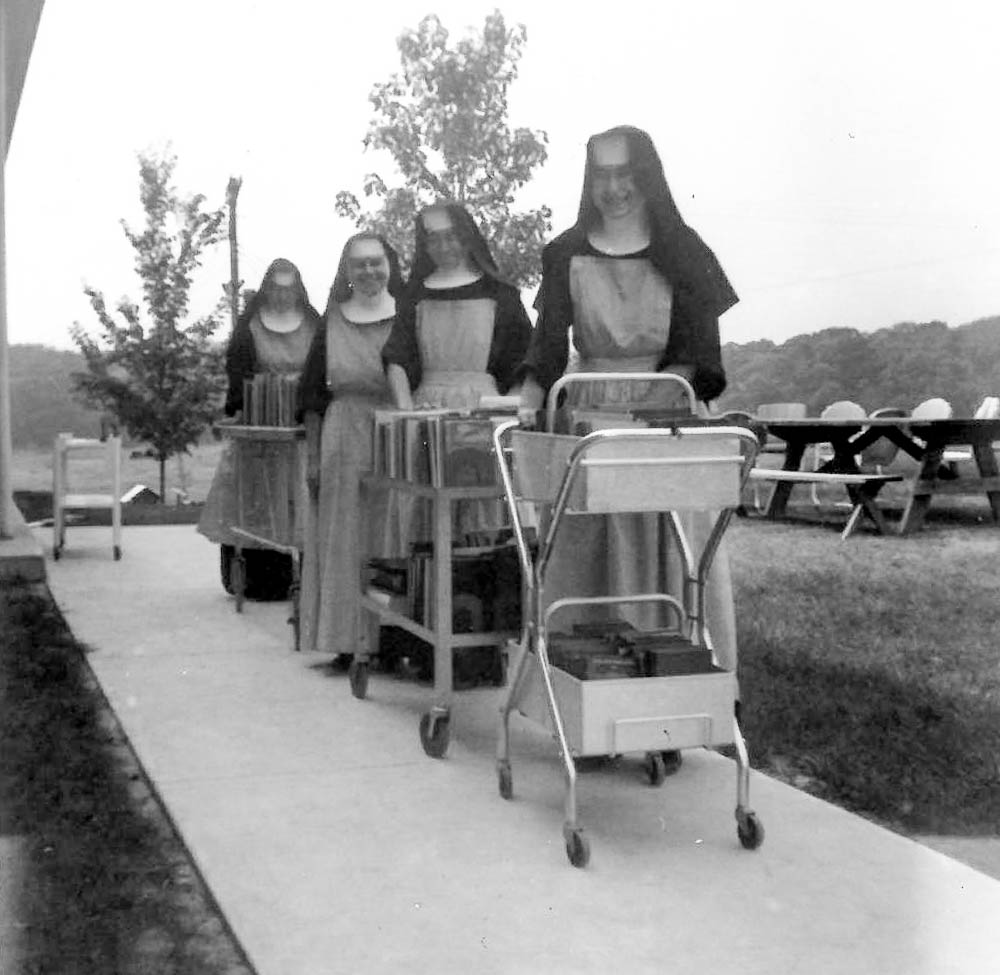
1961
- The move into the newly completed motherhouse began in August and the building was dedicated by Bishop O’Connor on November 1st.
- Equestrian skills were first offered at the Academy of St. Benedict in the 1961-1962 school year, with summer classes open to the general public. Sister Mary David Walgenbach was in charge of the riding stable.
1962
- The Academy’s first class began their senior year in September. The student body had grown from 14 to nearly 70. Extra-curricular activities now included athletic events, school societies and organizations.
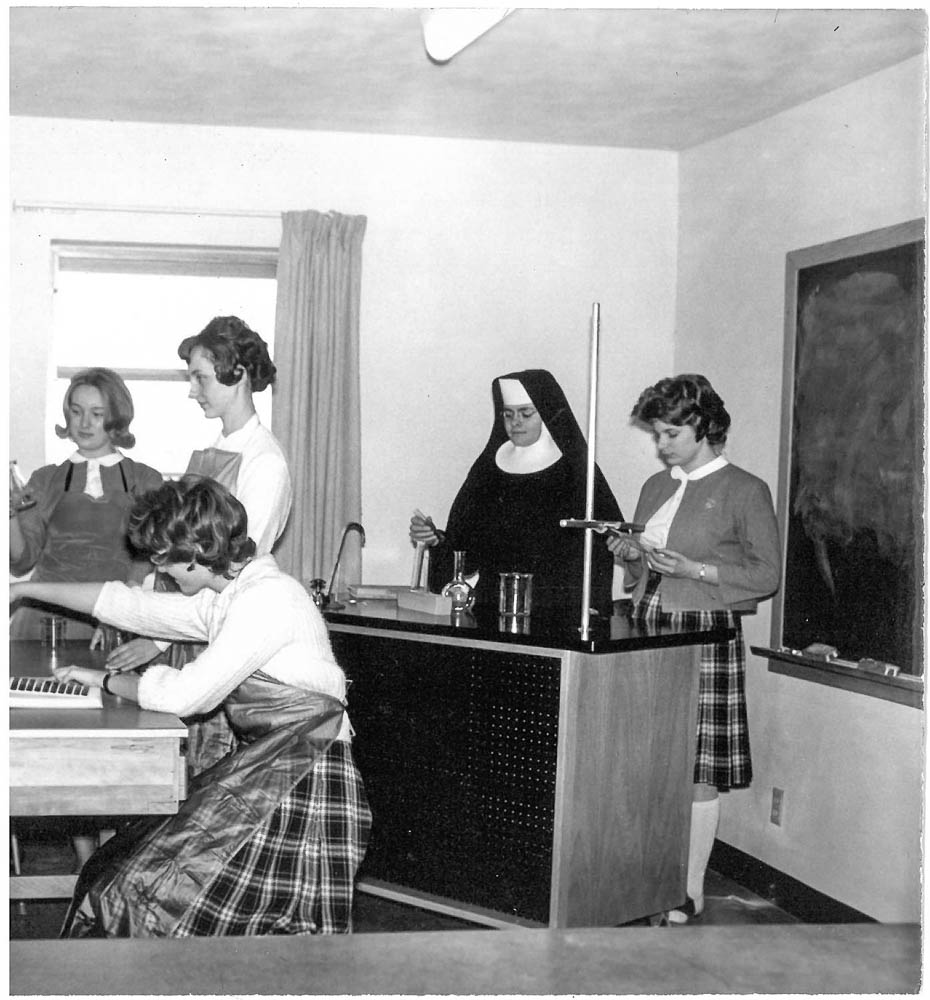
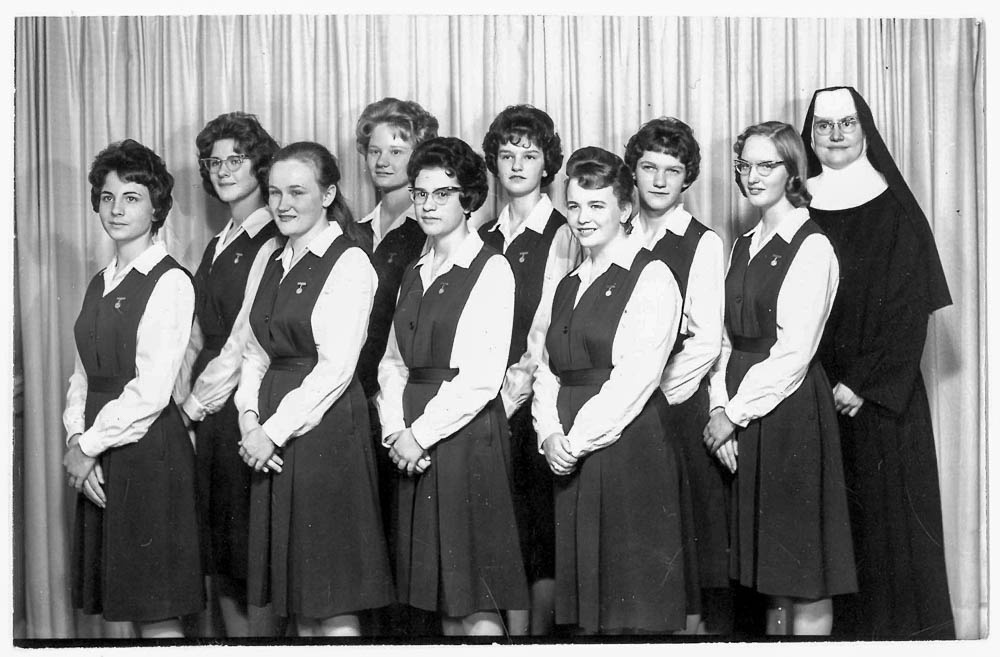
1963
- The community celebrated the graduation of the first Academy of St. Benedict class on June 3rd.
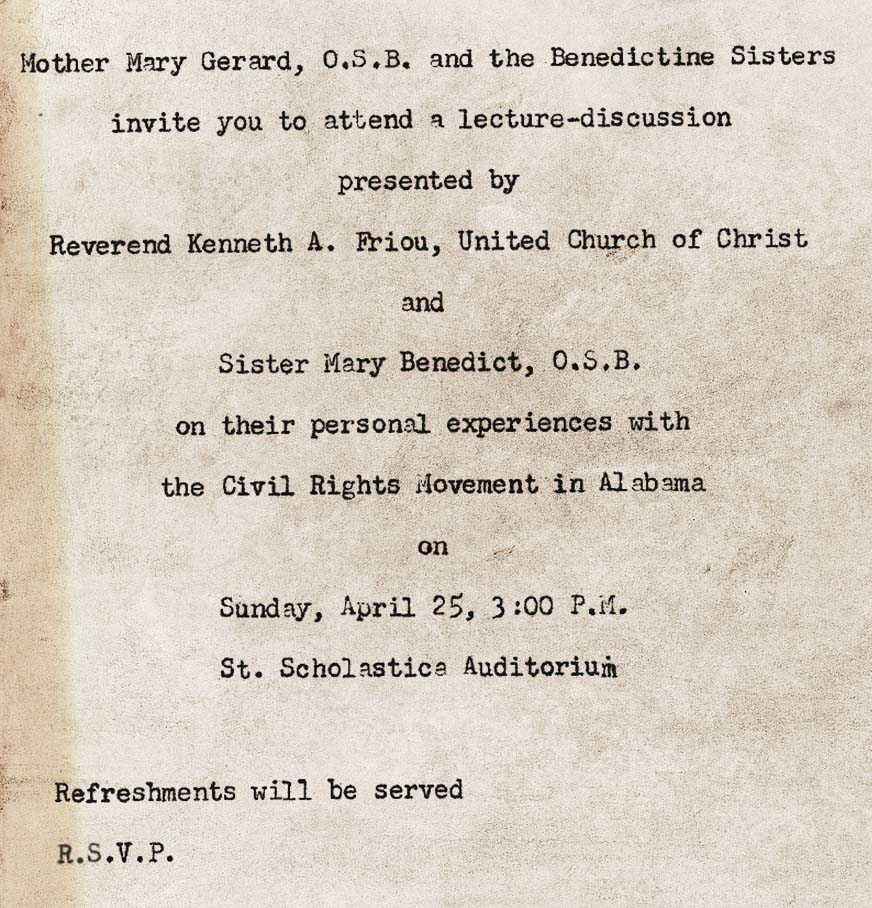
1965
- The sisters took a strong stance against segregation. Sister Joanne Kollasch (known as Sister Mary Benedict then) joined 19 other individuals from Madison and traveled to Montgomery, Alabama on March 16th to protest. This was in response to a call from the Student Non-violent Coordinating Committee of the University of Wisconsin-Madison. Sister Joanne continued her outreach by sharing her experiences in Montgomery with many groups and established relationships with campus ministers. The respect that grew from these relationships was one of the experiences that influenced the ecumenicity at St. Benedict Priory.
- Monks from the Protestant ecumenical community of Taizé, France, began bringing students from the University of Wisconsin-Madison to the Academy of St. Benedict for retreats.
- Collaboration with campus ministers during the civil rights movement, reflection with Protestant clergy, and numerous retreats led to discussions regarding the future direction and work of the sisters. Included in the discussions were members of Madison Interfaith Dialogue, a local group of religious leaders who met at the Academy. Through this discernment process, the sisters’ community decided to close the school and concentrate on their ecumenical work.
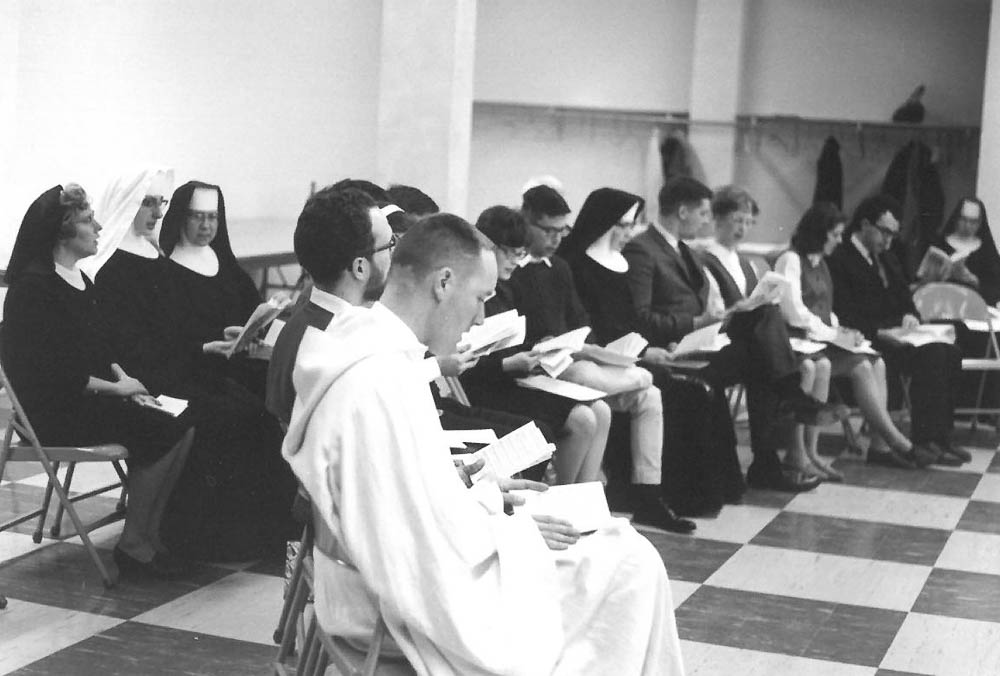
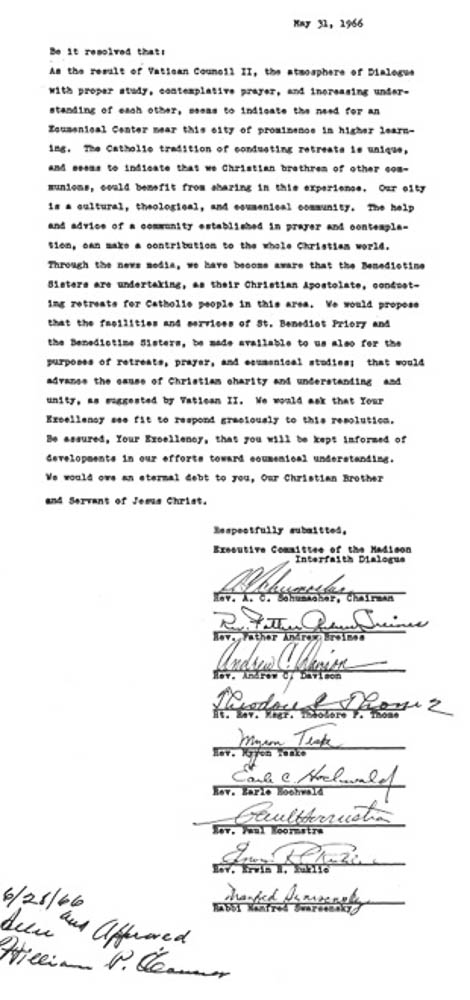
1966
- On May 31, Madison Interfaith Dialogue petitioned Bishop O’Connor to approve the community’s opening of an ecumenical retreat and conference center. The resolution was signed by Reverend A.C. Schumacher, St. John’s Lutheran Church, Madison; Reverend Andrew Breines, St. Francis Xavier Church, Cross Plains; Reverend Andrew Davison, First Baptist Church, Madison; Monsignor Theodore F. Thome, St. Bernard’s Church, Madison; Reverend Myron Teske, Lutheran Campus Ministry; Reverend Earle Hochwald, Middleton Community Church (United Church of Christ); Reverend Paul Hoornstra, Grace Episcopal Church; Reverend Erwin Ruklic, Westminster Presbyterian Church; and Rabbi Manfred Swarsensky, Temple Beth El, Madison.
- Bishop O’Connor signed and approved the resolution on June 28.
- The sisters closed the Academy and reopened their buildings as St. Benedict Center for Christian Unity in September.
- Beginning in June, Madison Interfaith Dialogue held monthly meetings at St. Benedict Center, and joined the sisters at midday prayer and at the noon meal. The monthly meetings continued through June 1973.
- The sisters began offering a residential summer camp for girls ages 7 to 14 called Camp St. Benedict. The camp consisted of four sessions of 40-45 participants. Three of the sessions were for day campers and the fourth was for resident campers. Sister Mary David was the coordinator and camp manager.
- The years after the Second Vatican Council (1962-1965) were filled with many changes for communities of women religious. The Sisters of St. Benedict and other communities spent their summers studying The Constitution on the Sacred Liturgy; the Decree on the Up-to-Date Renewal of Religious Life; the Decree on Ecumenism; and the Pastoral Constitution on the Church in the Modern World. These documents along with the Renewal Chapters of the Federation led to much experimentation in every facet of communal life, but particularly in the area of prayer. The following statements from the Decree on Ecumenism had a significant impact on the Madison Benedictines: “Today, in many parts of the world, under the inspiring grace of the Holy Spirit, many efforts are being made in prayer, word and action to attain that fullness of unity which Jesus Christ desires. The sacred Council exhorts all the Catholic faithful to recognize the signs of the times and take an active and intelligent part in the work of ecumenism.”
- The first in-house prayer book was printed. The sisters regularly invited people to join their community in the Liturgy of the Hours (daily prayer), and there were always a small number of people who participated. After the Second Vatican Council, and with the advent of St. Benedict Center for Christian Unity, more people—guests at the Center and neighbors in the surrounding area—joined in the community’s prayer. To facilitate the sharing of their prayer life with non-community members, the sisters experimented with simplifying the prayer book used for the Liturgy of the Hours.
1967
- On June 8 at the age of 36, Sister Joanne Kollasch was elected prioress for a six-year term.
What’s coming up?
Next, the focus is on the 1970s. Welcoming Christians of other denominations and practices, as well as the Dalai Lama, helped form the ecumenical heart of the sisters’ community and St. Benedict Center. The sisters also hired additional staff to assist them in their work towards ecumenism.
We hope you can join us for the 70th Anniversary Celebration on July 9, 2023.



